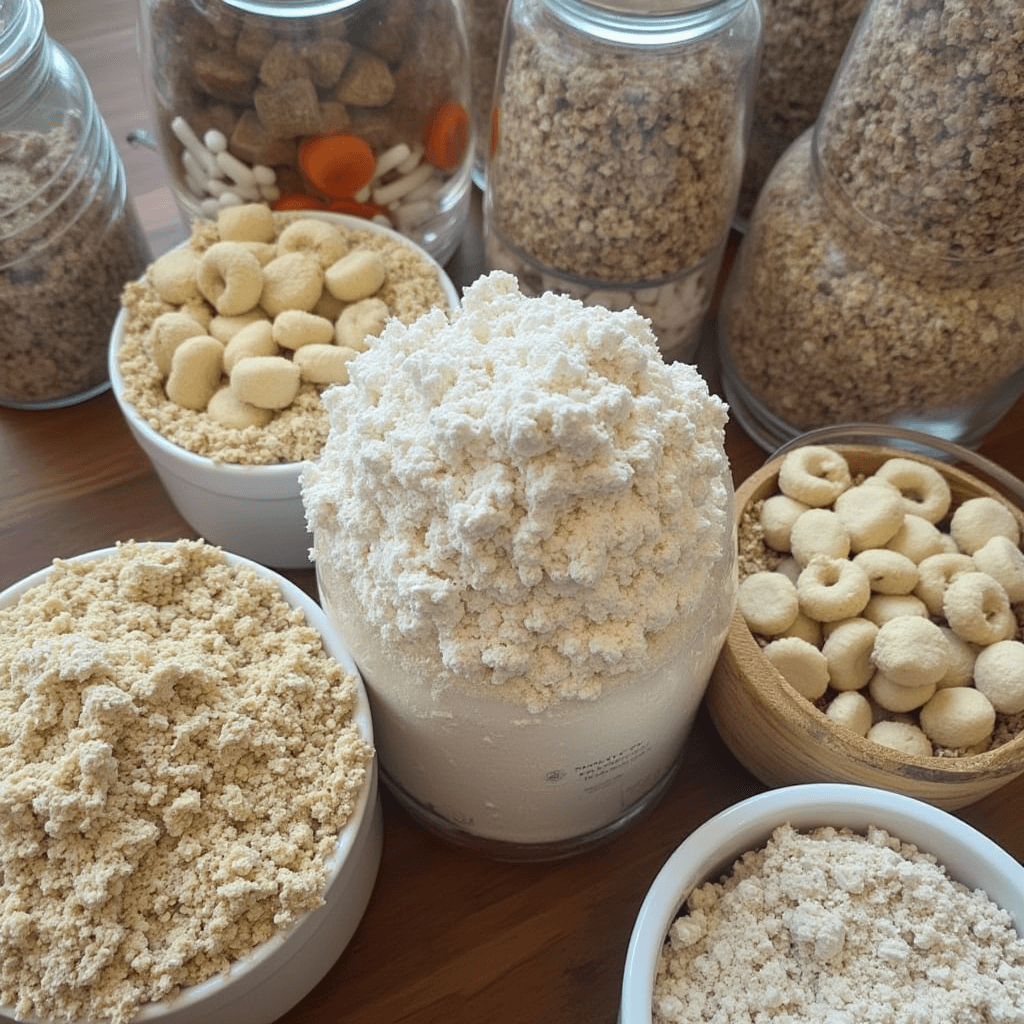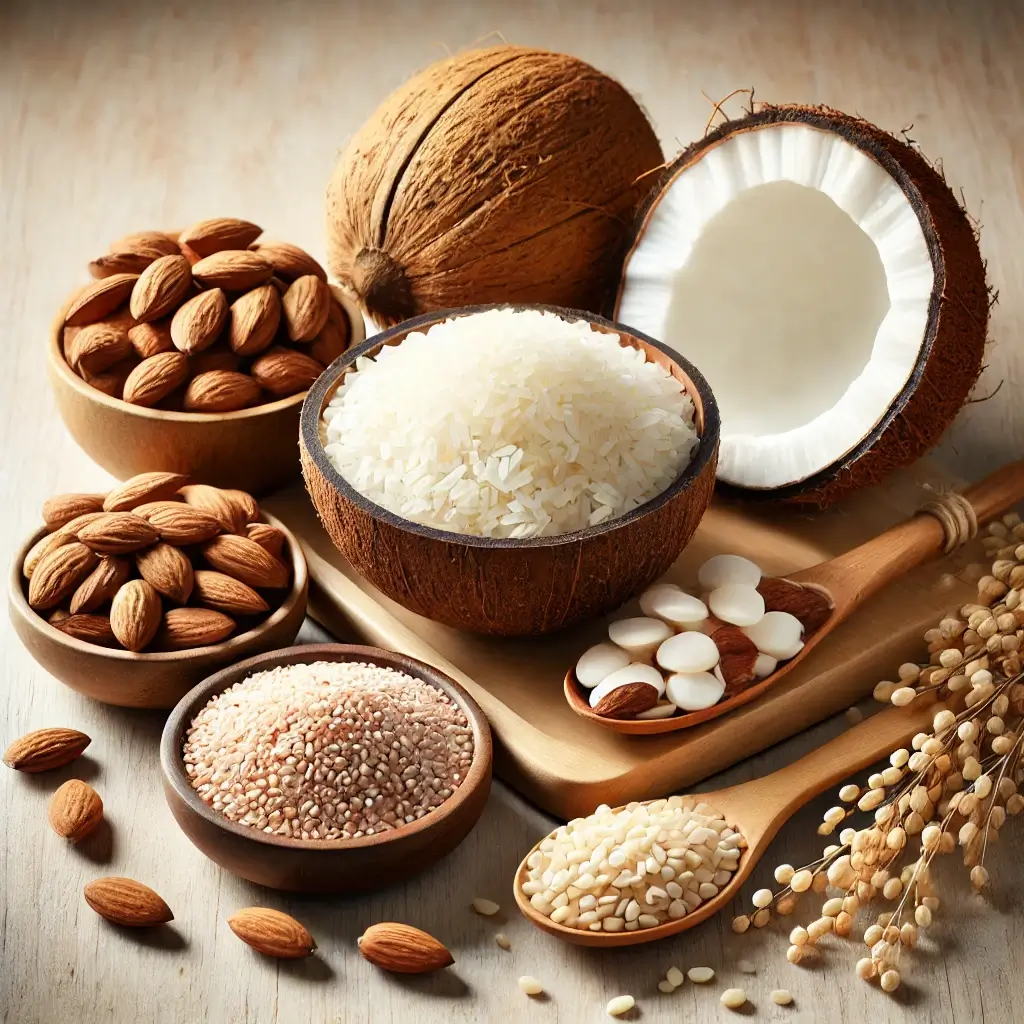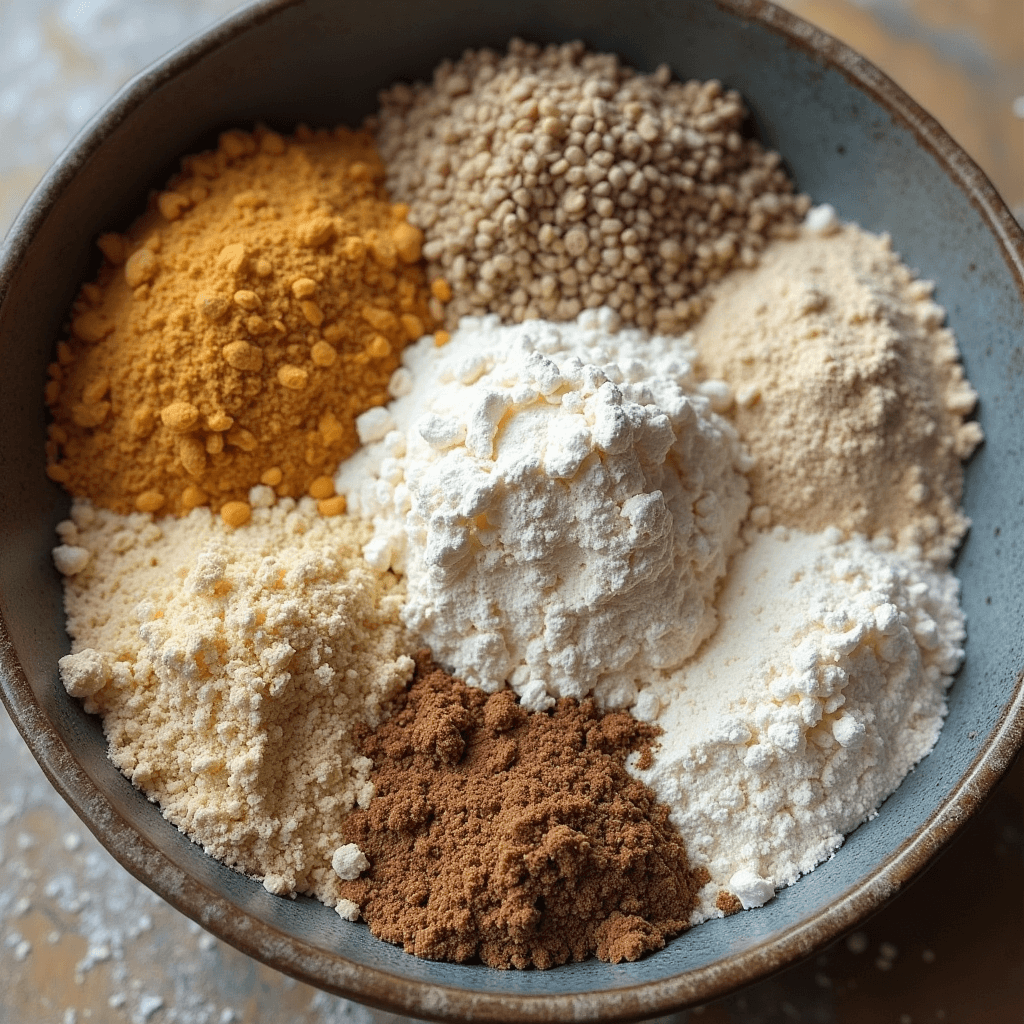Creating the Perfect Gluten Free Cookie Flour Blend
table of content
Why Use a Blend?
When considering what is the best flour for gluten-free cookies, it’s important to note that no single gluten-free flour can perfectly replicate the properties of wheat flour. Each gluten-free flour has unique characteristics—some add moisture, others provide structure, and a few contribute chewiness. By combining different flours into a blend, you can balance these traits and achieve cookies with the ideal texture and flavor. A well-crafted blend is often the best solution for creating delicious, gluten-free cookies that rival their traditional counterparts.
In this guide, we’ll dive deep into the best gluten-free flours for cookies, what makes each one unique, and how to use them effectively. By the end, you’ll have the knowledge to create gluten-free cookies that are just as satisfying as their traditional counterparts.

Understanding Gluten-Free Baking Basics
Why Gluten Matters in Baking
Gluten is the protein in wheat that gives baked goods their structure, elasticity, and chew. It acts as the “glue” that holds ingredients together, which is why cookies made without it often fall apart or feel dense. In traditional cookie recipes, gluten contributes to that soft, chewy, or crispy texture we all love.
The Challenge of What Is the Best Flour for Gluten-Free Cookies
When you remove gluten from the equation, it’s easy for cookies to become too crumbly, dry, or lacking in flavor. Each type of gluten-free flour has its quirks, and understanding how to balance them is key to replicating the texture and flavor of a classic cookie.
The Importance of Choosing the Right Flour
Not all gluten-free flours are created equal. Some are perfect for soft, chewy cookies, while others excel at creating crispy, delicate treats. Knowing which flour to use for your desired result is the first step toward baking success.
What Is the Best Flour for Gluten-Free Cookies?


Almond Flour
- Texture: Moist and chewy.
- Flavor: Nutty and rich.
- Best For: Chocolate chip cookies, macaroons, or any recipe where you want a naturally sweet, nutty flavor.
Almond flour is made from finely ground blanched almonds. It’s high in protein and healthy fats, which helps create soft and chewy cookies. If you’re aiming for a cookie that stays moist and flavorful, almond flour is a great choice. However, it’s denser than other flours, so it’s best used in combination with a lighter flour like tapioca starch.
Rice Flour
- Texture: Crisp and light.
- Flavor: Neutral.
- Best For: Shortbread cookies or delicate sugar cookies.
Rice flour is affordable and versatile, making it a popular choice for gluten-free baking. Its neutral flavor won’t overpower your cookies, but it can sometimes lead to a slightly gritty texture. Pairing it with tapioca starch or almond flour can smooth things out.
Coconut Flour
- Texture: Dense yet soft.
- Flavor: Slightly sweet and coconutty.
- Best For: Snickerdoodles, sugar cookies, or low-carb recipes.
Coconut flour is highly absorbent, which means you’ll need to adjust your liquid ingredients accordingly. A little goes a long way—usually, ¼ cup of coconut flour replaces 1 cup of traditional flour. Its natural sweetness pairs beautifully with cinnamon and vanilla.
Tapioca Starch
- Texture: Elastic and chewy.
- Flavor: Neutral.
- Best For: Blending with other flours for added chewiness.
Tapioca starch is a must-have in gluten-free baking. While it isn’t typically used on its own, it adds elasticity and chewiness when combined with other flours. It’s especially useful for creating the soft centers we all love in cookies.
Sorghum Flour
- Texture: Whole-grain feel.
- Flavor: Mild and earthy.
- Best For: Oatmeal cookies or molasses cookies.
Sorghum flour has a slightly coarse texture and a mild, nutty flavor that works well in recipes calling for whole grains. It’s high in fiber and protein, making it a nutritious option for hearty cookies.
Comparison of Gluten-Free Flours
| Flour Type | Texture | Flavor | Best For | Drawbacks |
|---|---|---|---|---|
| Almond Flour | Moist, Chewy | Nutty | Chocolate Chip Cookies | Expensive |
| Rice Flour | Crisp, Light | Neutral | Shortbread Cookies | May Need Xanthan Gum |
| Coconut Flour | Dense, Soft | Slightly Sweet | Snickerdoodles | Absorbs Excess Liquid |
| Tapioca Starch | Elastic, Chewy | Neutral | As a Blend Component | Lacks Flavor Alone |
| Sorghum Flour | Whole-Grain Feel | Mild, Earthy | Oatmeal Cookies | Slightly Coarse Texture |
For more Gluten-free recipes click here
Creating the Perfect blend to answer What Is the Best Flour for Gluten-Free Cookies
Why Use a Blend?
When asking, “What is the best flour for gluten-free cookies?” the truth is, there isn’t a single flour that can perfectly mimic the properties of wheat flour on its own. Gluten-free flours each have unique characteristics—some provide moisture, others contribute structure, and a few add chewiness. By combining different flours, you can balance their strengths and weaknesses to create cookies with the ideal texture and flavor. A well-crafted blend is often the answer to achieving gluten-free cookies that taste and feel just as satisfying as traditional ones.
Easy DIY Gluten-Free Flour Blend Recipe
To create a versatile flour blend for cookies:
- 1 cup rice flour
- ½ cup almond flour
- ¼ cup tapioca starch
- 1 teaspoon xanthan gum (optional)
Instructions: Mix all ingredients thoroughly and store in an airtight container. This blend works well for most cookie recipes and strikes a balance between softness and structure.
Tips for Baking Perfect Gluten-Free Cookies
- Chill Your Dough
- Refrigerating your dough for at least 30 minutes prevents cookies from spreading too much and improves texture.
- Use Parchment Paper
- This ensures even baking and prevents cookies from sticking to the baking sheet.
- Incorporate Extra Moisture
- Gluten-free flours often absorb more liquid. Adding ingredients like yogurt, honey, or an extra egg can make a big difference.
- Don’t Skip the Xanthan Gum
- While not always necessary, xanthan gum can help bind ingredients together, resulting in a more cohesive cookie.
Frequently Asked Questions (FAQ)
What is the best flour for gluten-free cookies?
Almond flour is ideal for creating moist, chewy chocolate chip cookies. For added structure, combine it with a bit of tapioca starch.
Do I need to use xanthan gum in gluten-free cookie recipes?
Not always, but xanthan gum helps improve texture and prevents cookies from crumbling. If your cookies feel too delicate, it’s worth adding.
Can I substitute gluten-free flour 1:1 for all-purpose flour?
Not usually. Most gluten-free flours require additional adjustments to liquid and binding agents. Using a blend often produces better results than a single flour.
Conclusion: Your Guide to Gluten-Free Cookie Success
Finding the best flour for gluten-free cookies doesn’t have to be overwhelming. With the right knowledge and a willingness to experiment, you can create cookies that are every bit as delicious as traditional ones. Whether you prefer the nuttiness of almond flour, the crispness of rice flour, or the versatility of a flour blend, there’s an option for every taste and recipe. For more information about gluten-free diet click here.
So, what are you waiting for? Grab your favorite gluten-free flour, preheat the oven, and start baking! And don’t forget to share your creations with friends and family—they won’t even miss the gluten.

